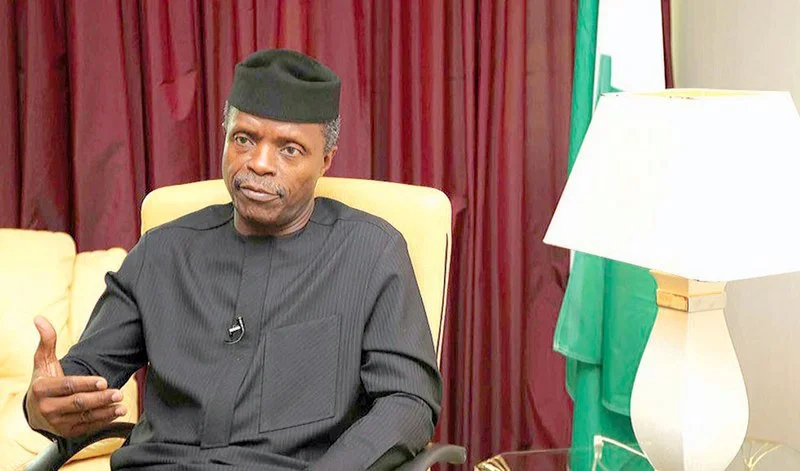Vice President Yemi Osinbajo has on Tuesday highlighted the impact and importance of the Social Investment Programmes initiated by the regime of the President, Major General Muhammadu Buhari (retd.).
Osinbajo, made the disclosure at the official launch of the ‘Review of Baseline Report and Realignment of the National Statistical System with SDGs, 2020,’ which was held at the Statehouse Banquet Hall, Abuja.
The Senior Special Assistant to the Vice President on Media and Publicity, Laolu Akande, issued a statement titled, “Our Social Investment Programmes will accelerate Sustainable Development Goals – Osinbajo”
The Vice President said that one of the objectives of the programme was to accelerate the attainment of the Sustainable Development Goals in the country.
Osinbajo added that the Federal Government’s national development objective is also in line with SDGs, and that the FG would continue to ramp up efforts to reduce poverty, provide jobs for Nigerians, create wealth, and address climate change.
He described the SIPs as “a multi-pronged approach to wealth creation, human capacity development, and poverty alleviation,”.
He also stressed that “the Conditional Cash Transfer component of the programme reaches approximately 8.9 million poor and vulnerable households and 37.7 million individuals across the country.”
Highlighting the impact of the Social Investment Programmes, Osinbajo noted that the Government Enterprise and Empowerment Programme has provided about 2.4m loans to petty traders and small entrepreneurs worth N38bn across the country.
He added that the regime’s youth employment and skills enhancement initiative, N-Power Programme, was designed to employ 1m youths between the ages of 18-35 and to further equip them with skills for the job market over a two-year period.
The Vice President noted that as a successor plan for the Millennium Development Goals, “the Nigeria SDGs Indicator-Baseline Report (2016) reinforced the need to strengthen our national statistical system to enable effective tracking and monitoring of the SDGs that we all committed to.”
The Vice President said, “One of the areas of marked improvement in this document is the increased range of reporting–from the 126 indicators recorded in the 2016 Baseline Report, to the 141 indicators in the current 2020 Report.”
To ensure the implementation of the SDGs, Osinbajo said that the federal government has been integrating them in its development plans and policies.
Copyright PUNCH.





2 Comments